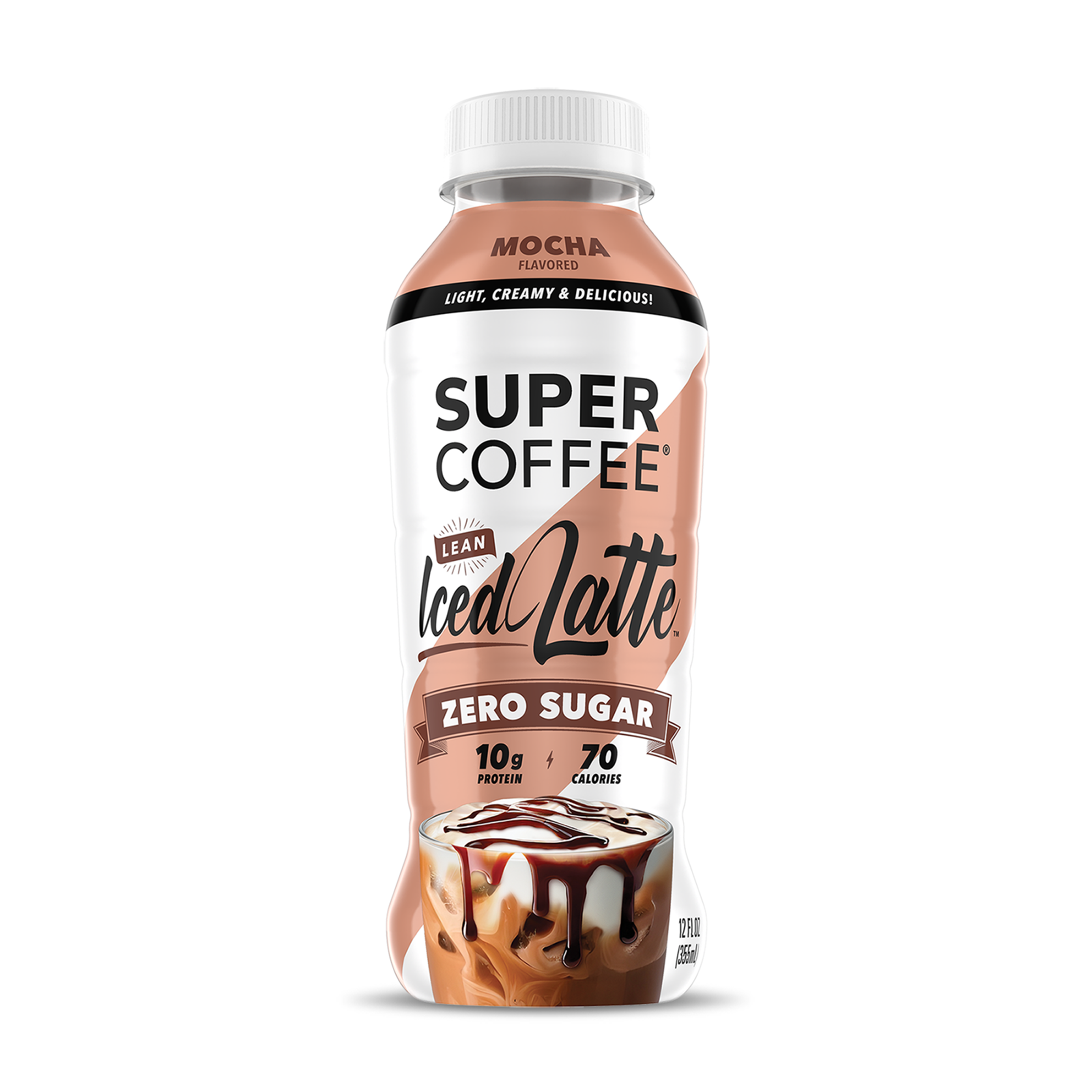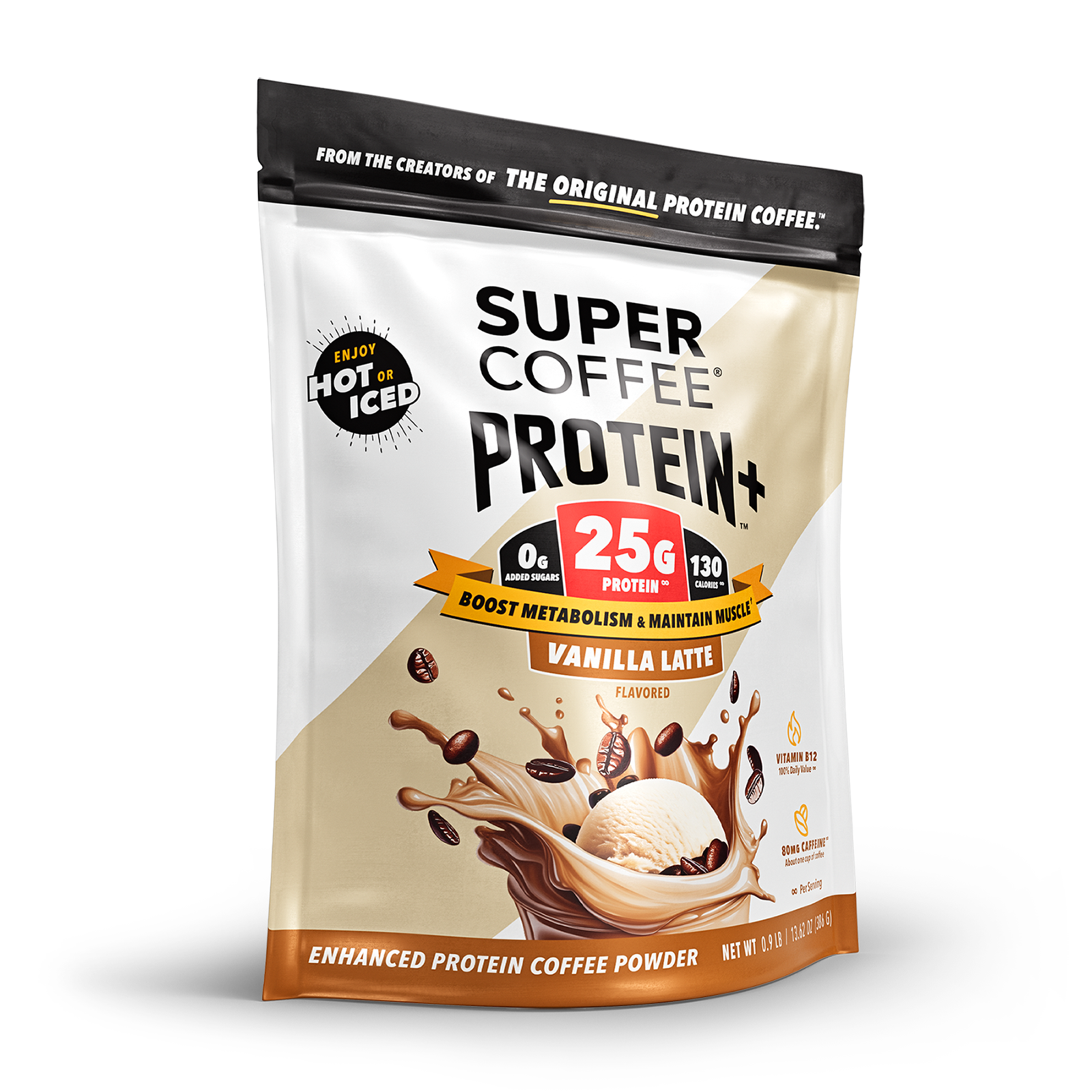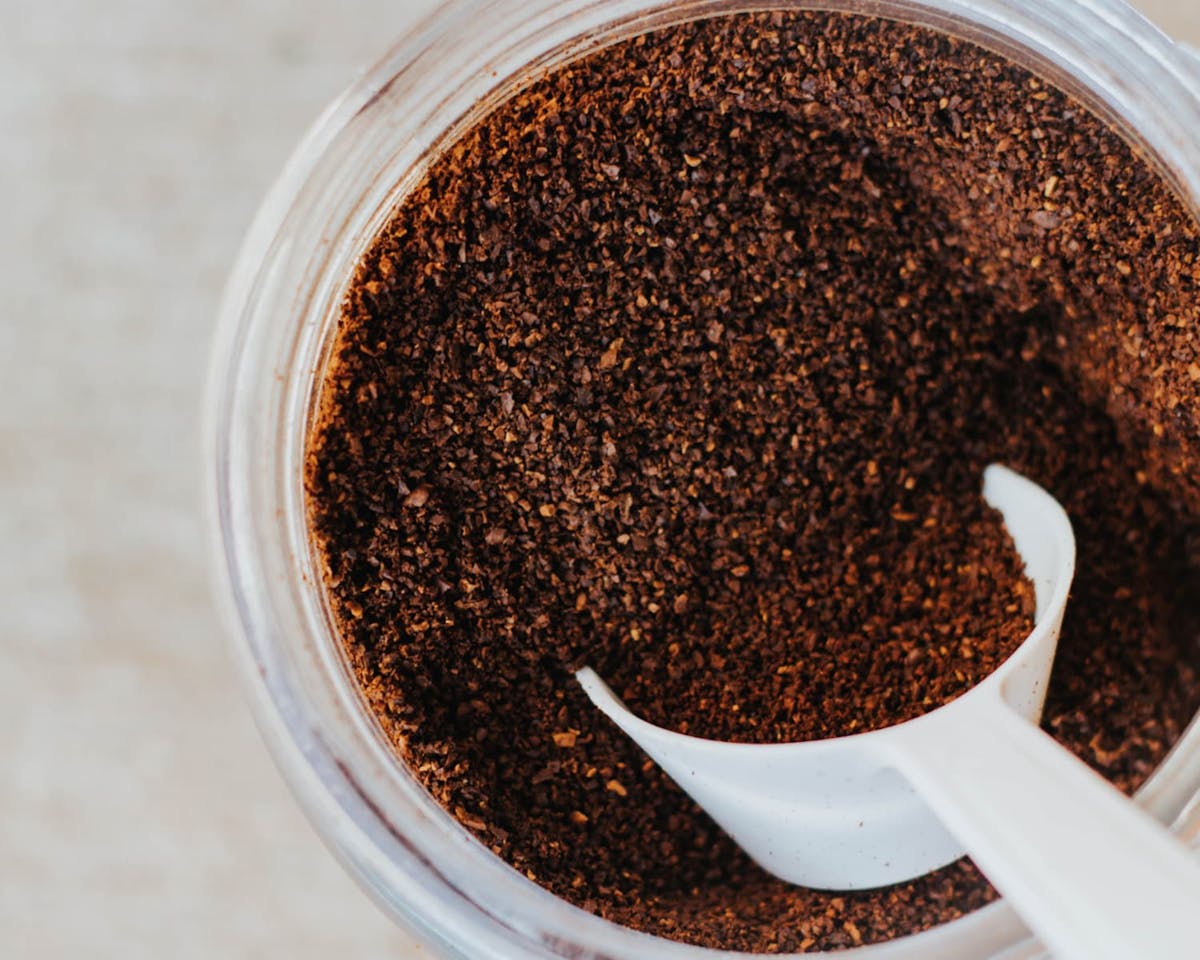Your cart is empty
You don’t have to be a coffee nerd to understand it.
The best ground coffee is the coffee you grind yourself. Whole beans retain their flavor and aroma much longer than pre-ground coffee, and they stay fresh longer. When you spend the extra minute to grind your own beans, you’ll wind up with a better cup of coffee.
However, many of us don’t want to bother with beans, measurements and grinders. Even more of us don’t have the time to grind our own beans. When you’re rushing to get ready for work or school, needless to say, every minute counts.
If using ground coffee lets you brew coffee that’s “almost as good,” while saving a little time, that’s usually “good enough.”
That only works if you start with high-quality ground coffee, though. And when you shop at your local grocery store or on Amazon, you’re confronted with hundreds and hundreds of choices. How do you know which brands of ground coffee will produce a cup that’s “almost as good” as freshly ground beans?
We’ve got you covered. Let’s start with buying tips; after that, we’ll list our top choices.

How to Choose the Right Ground Coffee
- When you’re buying high-quality produce, there are usually just two choices: organic or non-organic.
- When you’re buying high-quality steaks for a weekend barbeque, there are only a couple of grades (prime or choice) and a few cuts (ribeye, strip, porterhouse, tenderloin) to choose from.
- But when you’re shopping for high-quality ground coffee, the possibilities are endless.
Arabica, Robusta or blends. Five (or more) different grinds. Four (or more) different roasts. Any number of countries (or regions) of origin. Decaf. Organic. Flavored. Fair trade. Sustainable.
How do you make sense of it all?
First, you take a deep breath. Narrowing down the choices isn’t as hard as it first appears. You just have to learn a little more about each of the different types of ground coffee you can select. After that, it’s a breeze.
Arabica or Robusta
We’re starting with an easy one; these are the two varieties of beans that are easy to find in the Western Hemisphere. You probably want 100% Arabica coffee, which is universally believed to taste better than robusta. It’s sweeter and smoother, with complex and delicious flavor notes, and it usually has more acidity. Most of the coffee you’ve tasted, whether it’s at a restaurant or a Starbucks, is made from Arabica beans.
The biggest argument for robusta coffee is that it contains a lot more caffeine. However, it’s usually bitter and harsh with a less-pleasant taste profile (the nicest description you’ll hear is “earthy”). Robusta is most often used to produce instant coffee because the beans are less expensive, but it’s also commonly found in coffee blends, particularly espresso blends. Some people do like to use 100% robusta coffee to make espresso, because it produces a richer crema than Arabica.
Bottom line: Arabica will be more a little more expensive but will taste better. Robusta will be bitter-tasting, but cheaper and more caffeinated.
Coffee Grinds
Coffee drinkers often underestimate the importance of grind size, but it’s one of the most important factors in determining the right coffee to purchase.
Let’s pause briefly to talk about why the grind matters.
Coffee is brewed by pouring hot water through coffee grounds; the water extracts flavor and aroma from the grounds. The longer it takes for water to pass through the grounds, the more flavor and aroma it will absorb.
Coarse grounds are larger, so there is more space between each coffee particle and water flows through them quickly. By contrast, fine grounds are packed closely together, so the water sits in them longer and extracts more flavor. You can get too much of a good thing, though. If the water sits in the grounds for too long, it can get bitter. Not long enough, and it can be sour, too acidic or too weak.
That might make you think that a medium grind would always make the most sense. That’s not always the case, because different brewing methods require different grinds in order to make the best coffee.
Here’s a guide to help you match common brewing methods to the grind you should use.
- Coarse Grind: French Press, Cold Brew, Percolator
- Medium-Coarse Grind: Pour-Over
- Medium Grind: Standard Drip Coffee Makers, Siphon Coffee Makers
- Medium-Fine Grind: Aeropress
- Fine Grind: Espresso Machines, Moka Pots
Those are just guidelines, of course. If you find your coffee doesn’t taste right, you can either change the brewing time or change the type of grind you purchase.
Coffee Roasts
Arabica vs. robusta is a black-or-white between two taste preferences, and most people have no trouble choosing Arabica ground coffee.
Deciding on a roast profile is also a matter of preference, but there’s no “right” choice. Making the decision even more difficult: coffee roasters often use confusing names for their products. Don’t panic, though. Names like “Cinnamon Roast,” “Breakfast Roast” or “Espresso Roast” are really just marketing terms. We’ll deal with those after we discuss coffee roasting and why it matters.
When coffee beans are harvested, they’re green. They also don’t have their telltale aroma, and they won’t produce much flavor if they are just ground and brewed. Roasting the whole beans brings out their flavor and aroma, and the length of the roasting process determines how flavorful the coffee they produce will be. The name of each roast describes the final color of the coffee bean; the darker the roast, the longer it spends in the roasting process.
There are four common types of coffee roasts, each creating a different flavor profile.
- Light Roast: Mild, acidic, smooth, often fruity, not oily. Ground coffees labeled Cinnamon Roast or Light City are light roasts.
- Medium Roast: Less acidic with more body and balance, slightly sweet, not oily. Ground coffees labeled Breakfast Roast or American Roast are medium roasts.
- Medium-Dark Roast: Little acidity, aromatic and strong, full-bodied, bittersweet aftertaste, slightly oily. Ground coffees labeled Full City Roast or After Dinner Roast are medium-dark roasts.
- Dark Roast: Very full-bodied with a very strong roasted taste, no acidity, bitter, often somewhat-spicy, oily. Ground coffees labeled Espresso Roast, French Roast, Italian Roast or Continental Roast are dark roasts.
One thing to remember when choosing a roast: dark roasts usually do not contain more caffeine, despite common wisdom. It’s really light roasts that are generally highest in caffeine content, because longer roasting “burns off” caffeine contained in the beans.
Coffee Origins
You hear a lot about Colombian coffee, and deservedly so. You may also have heard about Ethiopian coffee, Kona coffee, and other coffees from various parts of the world. Truthfully, though, most ground coffee is made from a blend of beans, often from different countries or regions.
Single-origin coffees (with all beans originating in a single country, often a single farm) will usually have the most predictable flavor profiles, and are likely to be bolder with a stronger body. By comparison, blends have been designed to balance out some of the “rough edges” of one region’s signature flavor without muddling or destroying its taste.
If you are considering single-origin ground coffee, or a blend in which one type of bean predominates, here’s a brief look at what you can expect.
South and Central America
These coffees are generally clean and balanced, with a light-to-medium body and medium acidity and sweetness. Coffee from Colombia is known for its smoothness, its citrus flavors and its chocolate aroma. Brazilian coffee will often be heavier, with notes of chocolate, nuts or spice.
Central American varieties are likely to be more acidic and sweeter, with Guatemalan coffee likely to be the best of the bunch.
Africa
Most coffee from Africa comes from two nations, and their beans are quite different.
Ethiopian coffee is usually fairly light in body, with high acidity and complex flavors, if the beans have been “washed.” That means the beans are immediately taken from the coffee plant’s cherry (its fruit). If the beans are “natural” (allowed to dry inside the cherry) the coffee they produce will be heavier, with more body and a fruity flavor.
Kenyan coffee is typically savory, bold and complex – and much less commonly found on the American market.
Asia
Asian coffees are likely to be dark and savory, for two reasons. One is that robusta beans are popular crops in several Asian nations (particularly Vietnam). The other is that much of the non-robusta crop produces varieties rare in the West, Liberica and Excelsa.
The Indonesian ground coffee that you’re more likely to see here is smoky and earthy; you’ll also see Sumatran coffee that is somewhat similar, but with a toasted taste.
Other Considerations When Buying Ground Coffee
Packages of ground coffee often carry other labels, which may factor into your buying decision.
- Organic: You obviously know this one. The beans have been grown with organic farming techniques, meaning no pesticides or chemical fertilizers have been used. If the coffee is labeled “certified organic,” that simply means the producers have paid for expensive USDA certification of their organic techniques.
- Shade Grown: Basically what the name says; being grown under the shade of protective trees gives the beans more time to develop their trademark flavors and aromas.
- Fair Trade: This essentially means that farmers and workers are paid fairly for their crops and work. “Certified fair trade” means the process has been verified by one of several groups that monitor the process. This classification is controversial; some say it still doesn’t assure fair treatment for growers.
- Rainforest Alliance or CAFE certified: Both groups certify sustainable growing practices.
That’s a lot of information, and you’ve probably worked up quite a thirst.
Let’s make some coffee and take care of that.

Best Ground Coffee: Our Picks
Every coffee lover likes something different when choosing a variety or deciding what to order, and we don’t mean cream, milk or sugar. There are those who would feel lost without their espresso machine, others who prefer a light and flavorful cup of joe, and some who like to experiment and mix things up.
We decided to list our best ground coffee choices by category, to make it easy for you to find your favorite type of coffee.
(Note: all picks are made from Arabica beans unless otherwise noted.)
Best Light Roast Ground Coffee Caribou Coffee Daybreak Morning Blend
This Caribou blend is a bright light roast, a great choice for a gentle morning cup. There’s pleasant acidity, and a subtle sweetness with notes of flowers and berries and a caramel finish.
The company doesn’t say what regions the beans come from, but does claim that it sources them from the top 1% in the world – whatever that means. The beans are roasted in small batches, and the product is Rainforest Alliance Certified, meaning it’s been sourced ethically and sustainably.
For a light and delicious breakfast blend, you can’t do much better.
Honorable Mentions: Volcanica Ethiopian Yirgacheffe Coffee Lifeboost 1x OHonorable Mentions: Volcanica Ethiopian Yirgacheffe Coffee Lifeboost 1x Optimist Light Roast
Best Medium Roast Ground Coffee Kicking Horse Coffee Smart Ass Blend
A blend of African, South and Central American beans, this is one of Kicking Horse’s signature coffees. It’s a bright and smooth medium roast coffee, not as heavy as many on the market, and it’s loaded with flavor. You’ll taste berries, milk chocolate and sugar on your palate, while the aroma is sweet, fruity and enjoyable.
All Kicking Horse Coffees are shade-grown, organic and fair trade, and their medium roast Smart Ass is an excellent choice for a “regular” daytime coffee.
Honorable Mentions: Koa Coffee Private Reserve Medium Roast Peet’s Coffee BiHonorable Mentions: Koa Coffee Private Reserve Medium Roast Peet’s Coffee Big Bang Medium Roast
Best Medium-Dark Roast Ground Coffee Koa Coffee Grande Domaine
Koa is renowned for its high-quality 100% Kona coffee, which is grown on the slopes of the Big Island in Hawaii and is one of the best-tasting coffees you can find. The company specializes in standard Kona and Peaberry coffees, as well as Kona coffee blends; Peaberry coffee cherries have just one seed instead of the usual two, and it’s the rarest of all Kona coffees.
One of the most-delicious coffees that Koa produces is its medium-dark roast Grande Domaine Kona/Peaberry blend. This delicious coffee delivers a smooth, rich and bold flavor, with less bitterness than you’d probably expect. The beans ground for this coffee come from trees planted in 1918; they’re shade-grown, hand-picked by Hawaiian farmers, and create a coffee that’s absolutely worth trying. Don’t look for it in your local store, though; it’s only sold online.
Honorable Mentions: Fresh Roasted Dark Brazil Nossa Senhora De Fatima Organic Coffee Seattle’s Honorable Mentions: Fresh Roasted Dark Brazil Nossa Senhora De Fatima Organic Coffee Seattle’s Best Level 4 Coffee
Best Dark Roast Ground Coffee Death Wish Coffee Company Ground Coffee
You’ve probably heard of this legend described as the “world’s strongest coffee.” We can’t guarantee that’s literally true, but it’s certainly close – and it’s not only the reason to try this smooth, powerful dark roast. The best reason is its taste: no bitterness, low acidity, and double the caffeine of most competitors.
Death Wish makes this coffee in small batches from Indian and Peruvian beans. And yes, there are some robusta beans in the blend, which helps explain the extremely high caffeine content that the company claims is 2-4 times of an average cup of coffee. The flavor profile prominently features dark chocolate and cherry notes, leading to a very robust and tasty coffee. Death Wish is USDA certified organic, fair trade, and an experience you don’t want to miss.
Honorable Mentions: Komodo Dragon Coffee Lifeboost Dark Honorable Mentions: Komodo Dragon Coffee Lifeboost Dark Roast Ground Coffee
Best Espresso Ground Coffee Lavazza Crema E Gusto Classico
Yes, you can certainly use any of our preferred dark roasts to make espresso. But Lavazza is the name when it comes to Italian espresso, and this finely-ground blend of Arabica (30%) and robusta (70%) beans makes the reason for that crystal clear.
There are actually two Crema e Gusto coffee brands. Classico is full-bodied and strong with a distinct chocolate taste, while Forte is (if you remember your high-school language classes) even stronger, delivering a richer flavor with notes of tobacco and wood in addition to chocolate. Some people prefer a third brand, Lavazza Super Crema, for their espresso machine; you can’t go wrong with any of them.
Lavazza roasts its beans traditionally in Italy, and when you pour a shot of this coffee, it’s easy to imagine yourself enjoying it in an Italian caffè.
Honorable Mentions: Illy Coffee Classico Espresso Medium Roast (100% Arabica) Café La Llave Espresso Dark Roast (AHonorable Mentions: Illy Coffee Classico Espresso Medium Roast (100% Arabica) Café La Llave Espresso Dark Roast (Arabica and Robusta)
Best Ground Coffee for Cold Brew Stone Street Coffee Company Cold Brew Ground Coffee
Cold brew coffee has become a real “thing” over the past decade – it’s now so popular that companies have started creating ground coffee specifically to be used in the long and satisfying process of making this much-tastier alternative to traditional iced coffee.
Stone Street makes the best of the bunch. This is a coarsely-ground dark roast, made from single-origin Arabica beans sourced from Colombia. It lets you make strong, smooth and slightly sweet cold brew coffee that’s low in acidity and bold in taste, with notes of chocolate and nuts that work perfectly in an ice-cold, premium coffee.
Honorable Mentions Cold Brew Lab Coffee Hugo Coffee RoastersHonorable Mentions Cold Brew Lab Coffee Hugo Coffee Roasters Dog Daze Cold Brew
Best Flavored Coffee New England Coffee Ground Coffee
What flavor, you ask? Pick one. This company offers a number of varieties of their medium roast ground coffee, and while the coffee itself may not be as “premium” as most of the other brands we’ve listed here, the flavors are delicious.
Sure, they have “flavors” like Colombian Supremo and Breakfast Blend, but that’s not why you buy New England Coffee. It’s for the flavors like Blueberry Cobbler, French Vanilla, Hazelnut Crème, and Chocolate Cappuccino. When you’re in the mood for something different, this company has it.
Honorable Mention: Don Francisco’s Caramel Cream FlavHonorable Mention: Don Francisco’s Caramel Cream Flavored Ground Coffee
Best Decaf Ground Coffee No Fun Jo Organic Decaf Ground Coffee
When people hear the word “decaf,” they may think “ugh.” Decaf may bring to mind the jar of Maxwell House or Folger’s their mother kept in the refrigerator, or the watery stuff they’ve had at a diner or local coffee shop. If that describes you, get ready for a very different type of decaf coffee – one that tastes like a barista made it, not your mother.
No Fun Jo Decaf is a blend of certified organic, fair trade beans sourced from high-quality crops around the world and decaffeinated with the high-end Swiss Water Process. It’s manufactured in small batches and sold in light, medium, medium-dark and dark roast varieties, and the medium-dark is our favorite. It’s full-bodied but smooth and balanced, with strong notes of milk chocolate and blueberry. And it might even make you think about giving up the caffeine – at least once in a while.
Honorable Mentions: Café Don Pablo Light Roast Decaf Ground Coffee Savorista ColombiaHonorable Mentions: Café Don Pablo Light Roast Decaf Ground Coffee Savorista Colombian Inspiration Decaf
Best Instant Ground Coffee Mount Hagen Organic Freeze-Dried Instant Coffee
Certified 100% Arabica organic beans, single-origin and grown in Papua New Guinea, are the secret to Mount Hagen’s instant coffee. What’s so secret about it? It really does (we promise) taste almost as good as brewed coffee. It’s sweet and smooth, with decent body, medium acidity and no bitterness.
This instant coffee isn’t as strong as some you can find, but we think taste trumps strength any day. Trust us on this one.
Honorable Mentions: Canyon Coffee Instant Coffee Café Altura OrgHonorable Mentions: Canyon Coffee Instant Coffee Café Altura Organic Instant Coffee
Super grounds make super brews.
Shop Grounds
Blog posts
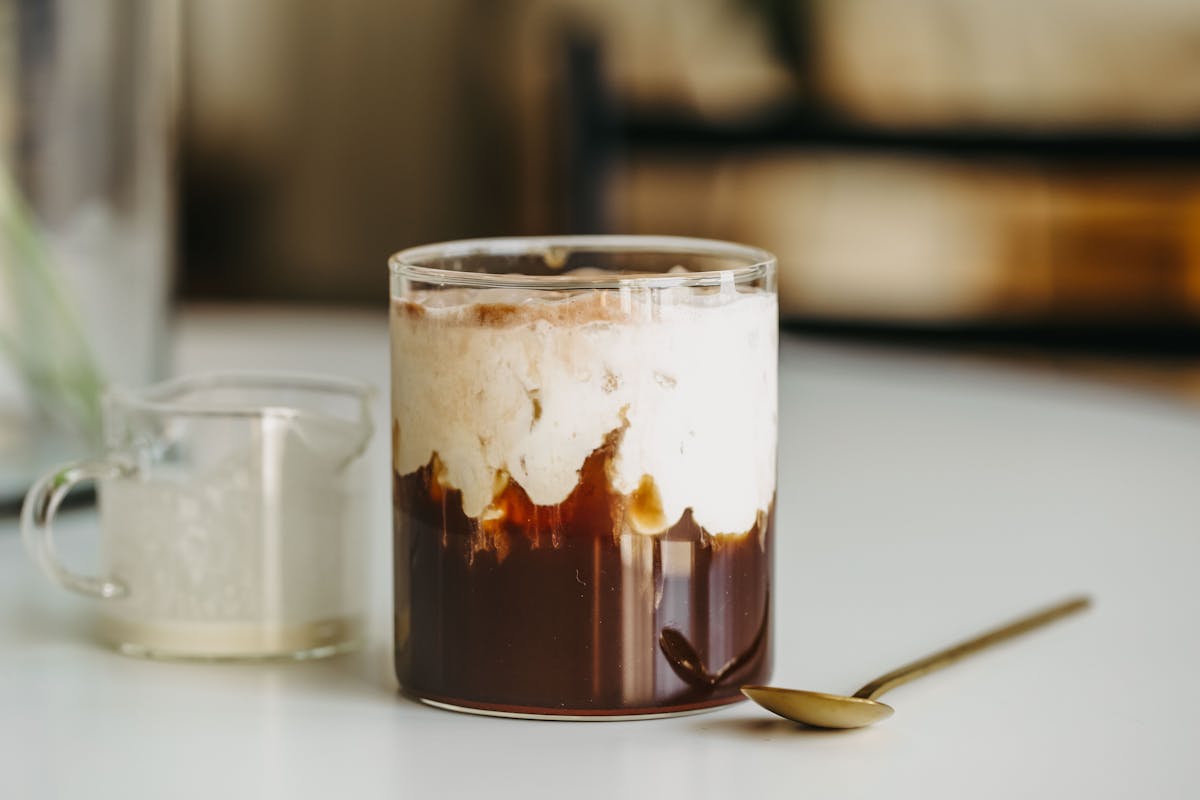
Cold, creamy and delicious - This chocolatey cold brew recipe is the perfect treat to kickstart your morning! The Recipe Chocolate Cream Cold Brew Prep Time: 1 minutes Cook Time: 5 minutes Ingre...
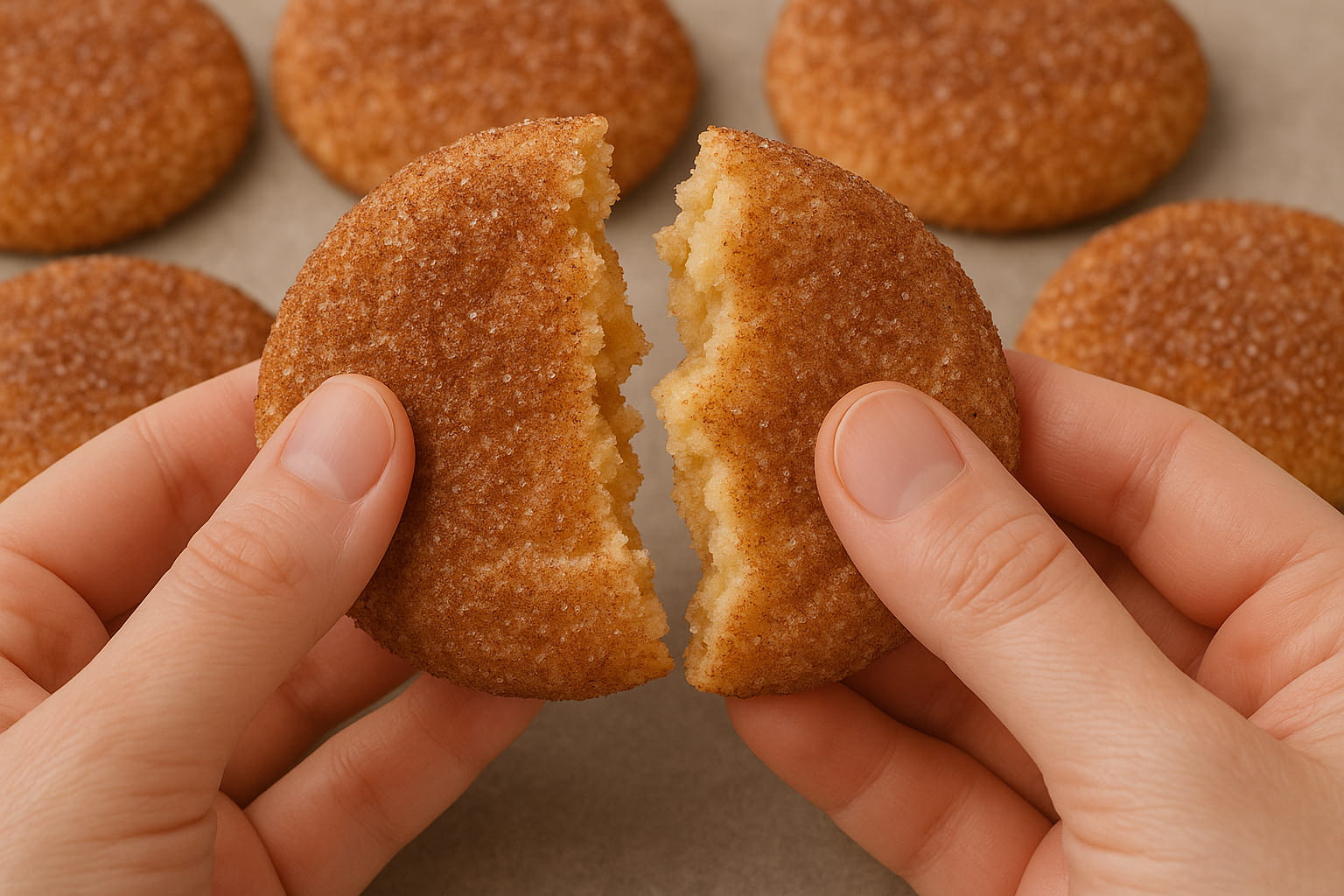
Indulge in the warm embrace of autumn with Pumpkin Spice Snickerdoodles - soft, spiced, and utterly irresistible! The Recipe Pumpkin Spice Snickerdoodles Prep Time: 10 minutes Cook Time: 1 hour ...
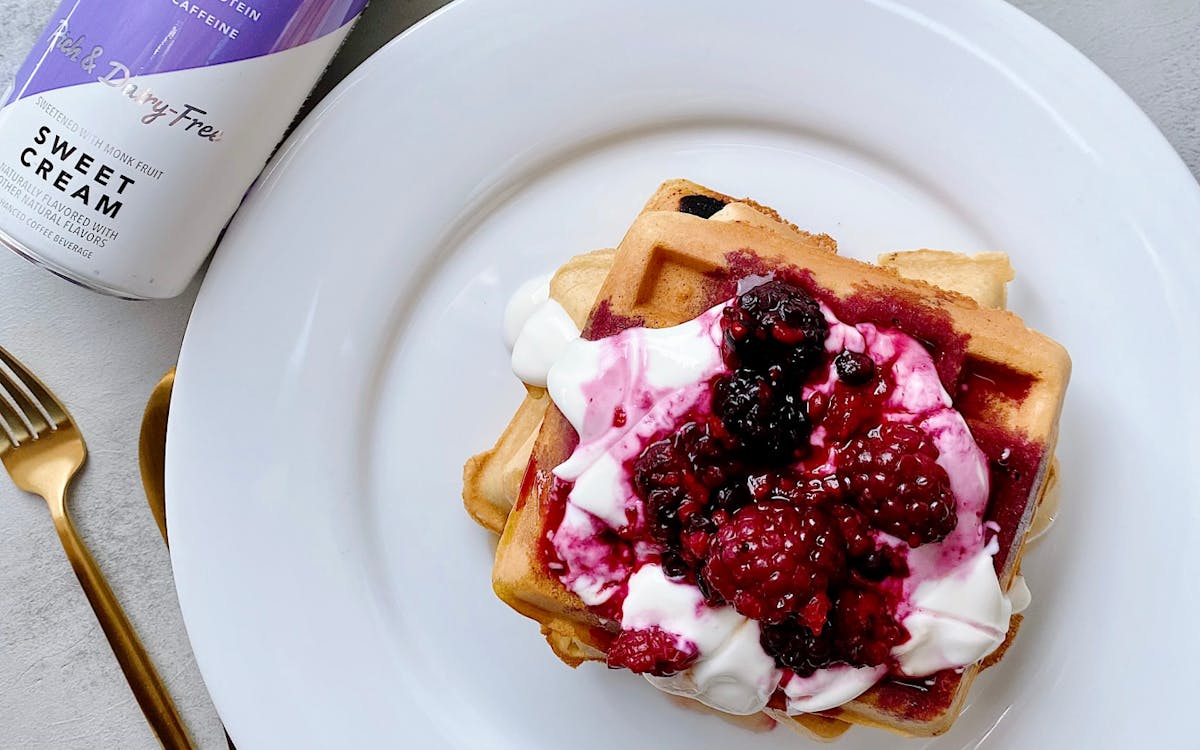
Low Carb Berries & Cream Waffles
These low carb/low sugar waffles are delicious, wonderfully crispy on the outside, and fluffy on the inside. You can also double batch and freeze for easy weekday breakfasts. Featuring our almost-...
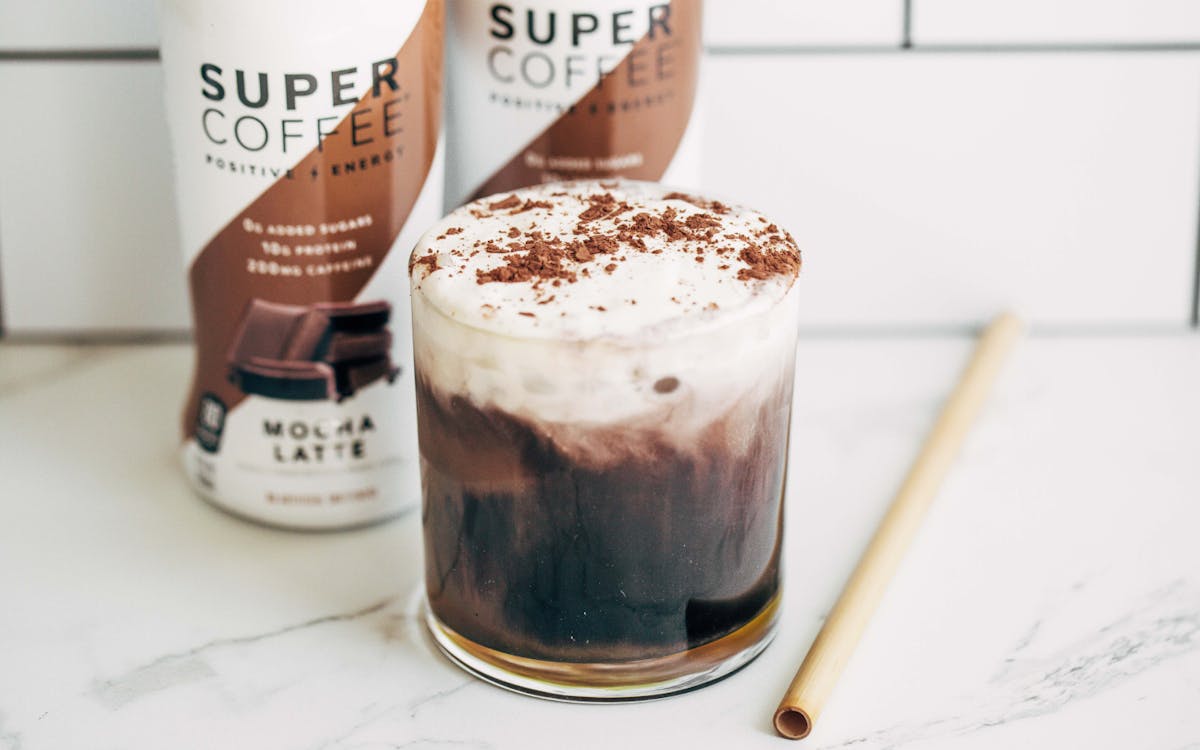
This may be the most fun latte recipe we’ve tried yet! With gooey & decadent black chocolate drizzle and a thick layer of creamy French Vanilla, just one sip of this iced latte will transport ...
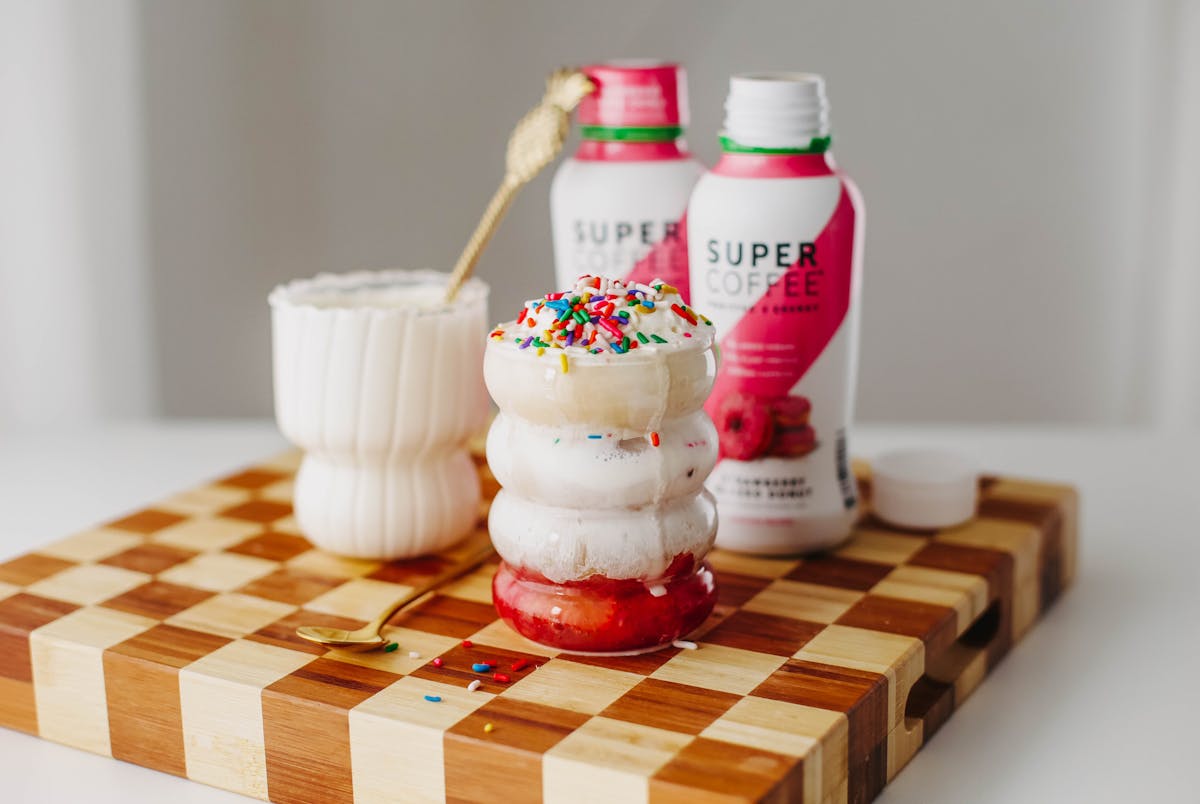
Strawberry Sprinkle Keto Coffee Recipe
Nutritional Info Calories: 274 Fat: 26.7g Carbs: 5.7g Protein: 4.5g Sugar: 2.1g Ingredients 3 strawberries, sliced. 3-4 tbsp heavy cream or half & half. Enough ice to fill a glass. 1/2 cup S...
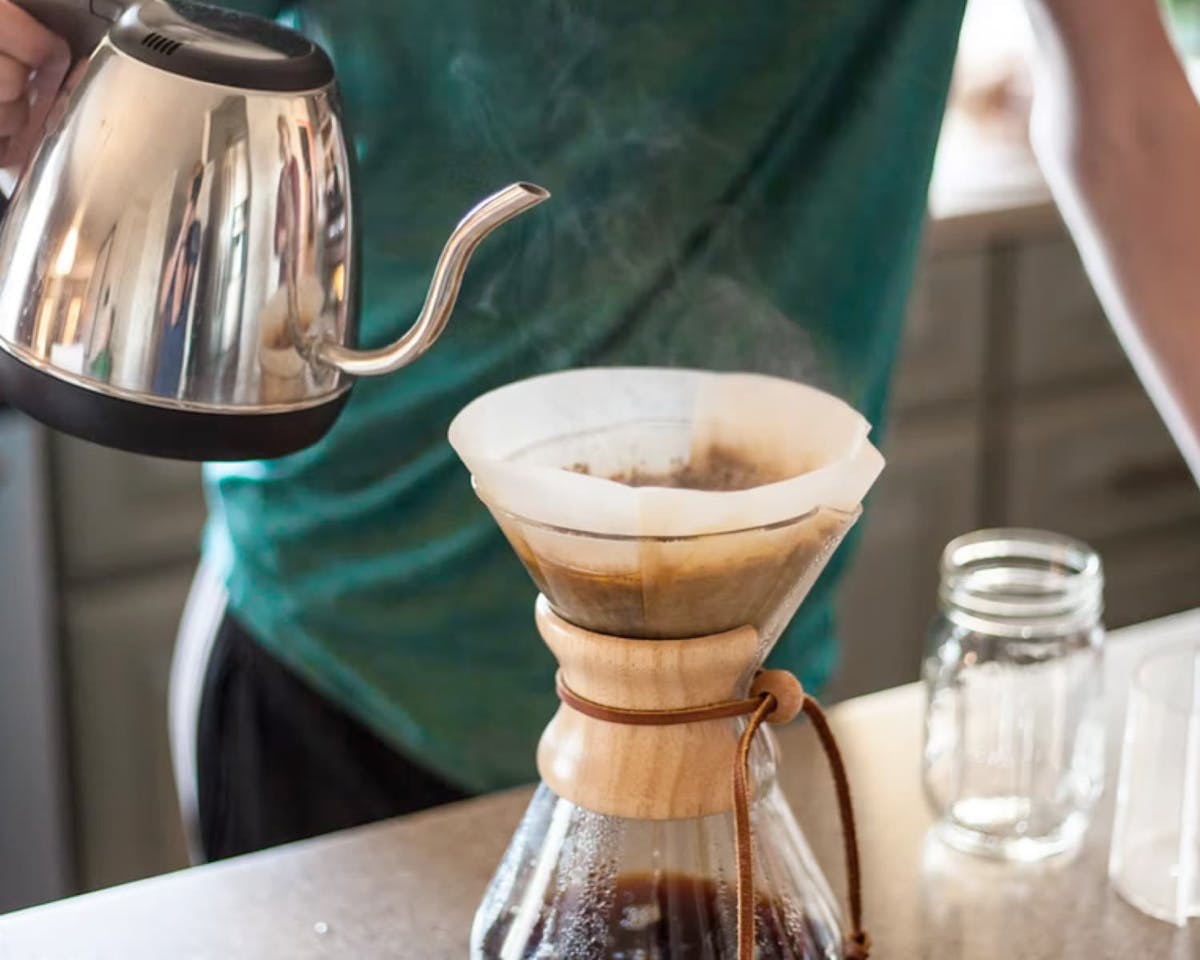
8 Healthy Coffee Recipes That Are Better Than Starbucks
There’s no question about it. Coffee is good for you. Those who don’t like black coffee, of course, commonly add milk, cream and sugar – even if that also means adding calories, fat or carbs to the...



